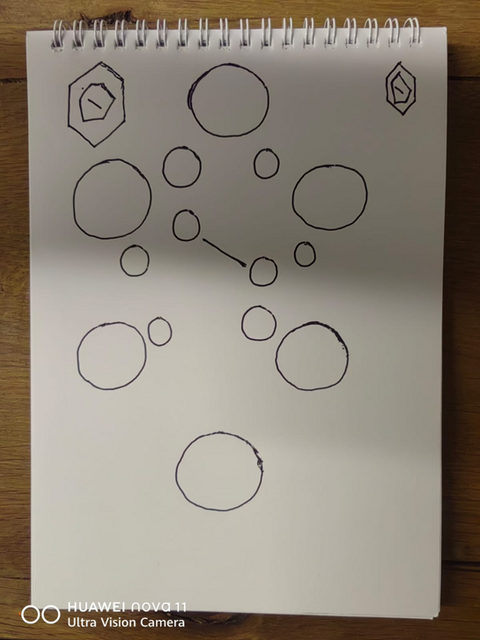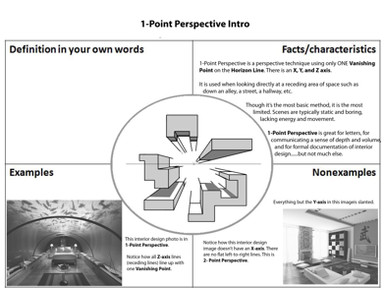HOME | DD
 photo-class —
Understanding Depth of Field
photo-class —
Understanding Depth of Field

Published: 2004-04-01 15:00:14 +0000 UTC; Views: 60909; Favourites: 739; Downloads: 18020
Redirect to original
Description
Brief:Depth of Field is one of the most important - and probably most complicated - aspects of photography.
This article is an attempt to simplify it, explaining how and why it changes and what to do to control it.
Enjoy, and please leave us a comment if you found this helpful, or if you have advice/corrections/questions.
Thank you!
Article by `In-Apt
Intermediate level article. All beginners are recommended to read Making of a Photograph article first.
Related content
Comments: 147

as usual youve summerised a hard topic into some very nice easy concepts.
👍: 0 ⏩: 0

amazing stuff!!!!good job!! you should be recognized by the vatican!!!
👍: 0 ⏩: 0

the illustrations and diagrams are awesome, a big help to understand all this stuff. very helpful - and i'm greatful for this, thanks a lot!
👍: 0 ⏩: 0

Will the DOF change linearly when you change your aperature size, or is it non-linear?
👍: 0 ⏩: 1

It is definitely not linear. As you go to smaller apertures, the DOF will increase more and more each time.
👍: 0 ⏩: 0

I don't think the 50mm is "standard" because it is in any way similar to a human eye! My eyes have much wider field of view than a 28mm... I believe the 50mm is just very straightforward to manufacture.. I read somewhere it is "standard" simply due to "historical reasons." Whatever that means
I pretty much wasted my first few rolls because I was confused by DOF. Pretty quickly I had sorted it out; this tutorial here puts all straight and clear for those who don't already know!
I didn't notice anything about a Depth of Field Preview; or how when you look through the viewfinder the aperture is wide-open -- an untrue view of the image you plan to capture!
Very good information, diagrams, the works!
👍: 0 ⏩: 1

You make a very good point about DOF preview this is something we should have added, thanks!
👍: 0 ⏩: 0

I'm glad you enjoyed it.
sometimes, one needs illustrations to really grasp some concepts.
thank you for your support to this account!
👍: 0 ⏩: 1

yeah .. its really goods stuff ... I wish I was good at certain basic aspect of photography .... no problem on the support ... I wish I heard of you guys earlier
👍: 0 ⏩: 0

DOF makes a whole lot more sense now. Thanks a lot! Keep up the good work.
👍: 0 ⏩: 0

brilliant work 

was a delightfull read... i have read one article before about DOF but this one has helped clearing out many misunderstandings
cheers
👍: 0 ⏩: 0

Excellent!! I kinda had a rough idea what DOF was, but this clarifies a lot of stuff for me.
Keep 'em coming!
👍: 0 ⏩: 0

Imperssive... one of the best explanation of the factors involving DOF I've seen so far... the images of how it changes with them are very good examples! Congrats and thanks for bring it to us!
👍: 0 ⏩: 0

It's just wonderful because it has your work, Arthur. That is what makes it pretty...
Again, thank you so much - and I'm happy that you enjoyed it.
👍: 0 ⏩: 0

i have a point-and-shoot. *runs away and hides in the corner*
👍: 0 ⏩: 0

You guys have made the most useful and helpful tutorials on what I know to be the internet. Thank you. You guys rock so much!
👍: 0 ⏩: 0

truly a gemstone.
fantastic explanation e congratulations on the much deserved DD.
👍: 0 ⏩: 0

Kudos to you guys for touching base on a complicated subject - you've certainly narrowed things down and done your best to make sure everyone reading can understand
Someone should touch base on exposure control and metering!
👍: 0 ⏩: 1

That was the idea, trying to make it understandable, as far as DOF can be though...
Thank you Evan, for all your support.
I'll remember the suggestion!
👍: 0 ⏩: 1

No problem - if you want help writing it let me know - I'm still like to commit myself to helping others in any way while I'm off for the summer!
👍: 0 ⏩: 0

This seems to be about 89% rock-solid excellent, but I have one concern about the order in which all the means are presented.
The three variables are presented and explained, as "background," but their specific relevance to DOF management is mostly left until they are all considered in tandem. This seems to pass up a golden opportunity to highlight the relevance of each more specifically, so the viewer could completely grasp each variable before attempting to grasp the interrelatedness between them.
For instance, an essay on exposure would necessarily address aperture, shutter speed, and ISO settings, but would surely examine each independently first, before expecting the viewer to grasp all the interrelatedness of those factors in tandem. I feel pretty strongly a like method should have been attempted here.
Other than that, this is in many ways among the very best explanatories featured here to date. I'm frankly thrilled to see such extensive use of diagrams and illustrations, other than photos, used for their clarity of communication - it's really too good an opportunity to pass up, and the "free-wheeling" usage here is impeccable. (The photos used for conceptual illustration are, of course, perfect examples.)
As is the trend among these explanatories, the balance of information-concentration and clarity/ease-of-read delivers "maximum bang-for-the-buck" execution. (Good use of sidebars too.) However, it might have been nice to recommend a couple of specific links to that "fun math" rather than merely hurl the reader out into the nebulous web to ferret it out for themselves.
Finally, regarding all the information, it certainly taught me a few things (as well as clarified some things I had grasped only intuitively before), and I'll surely be reviewing it from time to time to deepen my grasp of some of the finer points. My only concern, as stated above, really pales to the overall value of the exercise, but would simply add a further level of clarity to those learning these issues for the first time, to give them each more independent due.
👍: 0 ⏩: 1

Thank you so much for this comment. This is what we need to keep improving.
Problem with going deeper into certain aspects deals mainly with clarity of thought, as well as one's capacity to understand and follow through.
Occupying already a 5 page spred in word, I was fearing that getting into fruther scrutiny on specific details would prevent people from understanding the issue at hand. I do agree with you when you say that we do not highlight the relevance of each factor.
The thing I debated with was:
- First of all, I wanted this to be simple, understandable, and, above all, practical. Something that people could read, and put into practice in their next shot. If I wrote too much, too complicated, they would lose focus and perhaps wouldn't want to try - it was too technical to 'understand'...
- DOF depends greatly of many, many variables. Though I could have tried to go deeper on certain aspects, it would become increasingly harder (at least for me) not to carry on explaining and getting into detail, risking losing track of the previous point.
It was a very hard article to make, especially the diagrams; though not perfect, I tried to make them as accurate as possible, and I am no photoshop genious (well, you can see that in the diagrams though!) 
It was a tiresome project. Perhaps in a few weeks I can look at it again and improve it.
Right now - this was a break in my studying program...
Thank you again for the comment!
👍: 0 ⏩: 1

Glad you appreciate the balanced assessment.
My feeling is that adding one page (at the most) would make it less complicated, to the point I mentioned above. And I think my example of treating aperture/ISO/shutter speed in sequence (in a comparably-minded tutorial) illustrates the ideal direction here. If you'd like specific input at an opportunity for revision, you know I'd be glad to provide it.
However, I think your hard work on the diagrams paid off marvelously. Don't fret those at all. And, in fact, the whole boil-down is fabulously well-conceived - it's packed with peanuts and leaves us mighty satisfied!
👍: 0 ⏩: 0

This is great! I definitely learned a lot. I was told in a comment that one of my photos ("Hanging On Together") had good depth of field, and I had no idea what that meant. Thanks for another great tutorial!
👍: 0 ⏩: 0

Another wonderful article, great work.
I can't wait till the next one comes out
👍: 0 ⏩: 0

Yayyyy .. DOF explained and in laymans language .. I can understand this! wooohoooo 


👍: 0 ⏩: 0

Yes, you are correct. I wanted to end in a full-stop, so that's why I went there.
actually, even F/2.8 is rare, normal cameras are F/3.5 and up
👍: 0 ⏩: 1

yes. I really want the Nikon 85mm/1.4 for portraits, but it's so fu*****ing expensive. But it's a lot cheaper than the 50mm/1.0 from canon
But I have a Nikon 80-200/f2.8 ED [link] - that's a great lens
👍: 0 ⏩: 0

6 months of a Photography course and I never had a clue about any of that stuff, 10 minutes reading a brief tutorail on the subject and it's all still a little fuzzy, but I just need the next f-stop.
sorry, the joke had to be made. Again a nice easy to comprehend tutorial. Keep em coming guys
👍: 0 ⏩: 0

Very helpful as usual. Thank you! Depth of field is one of the most interesting aspects of photography for me.
👍: 0 ⏩: 0

I have an odd question... whenever I download these articles as soon as they fully download they shrink to fit the page. Unless I save the image and take it into PS and zoom into it, I can't read it.
Do I have to change any settings on my page to keep them full screen when they upload?
Cheers
Kim
👍: 0 ⏩: 1

Internet explorer automatically resizes the images when they don't fit the browser window. There are 2 things you can do about this:
* Once the image has resized, hold the mouse still over it for a while and a little icon with expanding arrows will appear at the bottom right of the image. Click it and the image will appear normally.
* Go to Tools -> Internet Options... -> Advanced
In the Multimedia section there is a "Enable Automatic Image Resizing" checkbox, uncheck it and you'll be fine 
Hope that helps.
Cheers
👍: 0 ⏩: 1

Cool.. thanks so much, whoever you are!
(great April Fools joke! I'm sure you got some people!)
👍: 0 ⏩: 0

SO far I have saved every single one of these on my hard drive because of how helpful they are and I thank you all for taking the time to make these.
👍: 0 ⏩: 0

great great great !
downloaded and i'll print that to have it at hand,
thanks for the teach !!!
👍: 0 ⏩: 0
<= Prev |









































